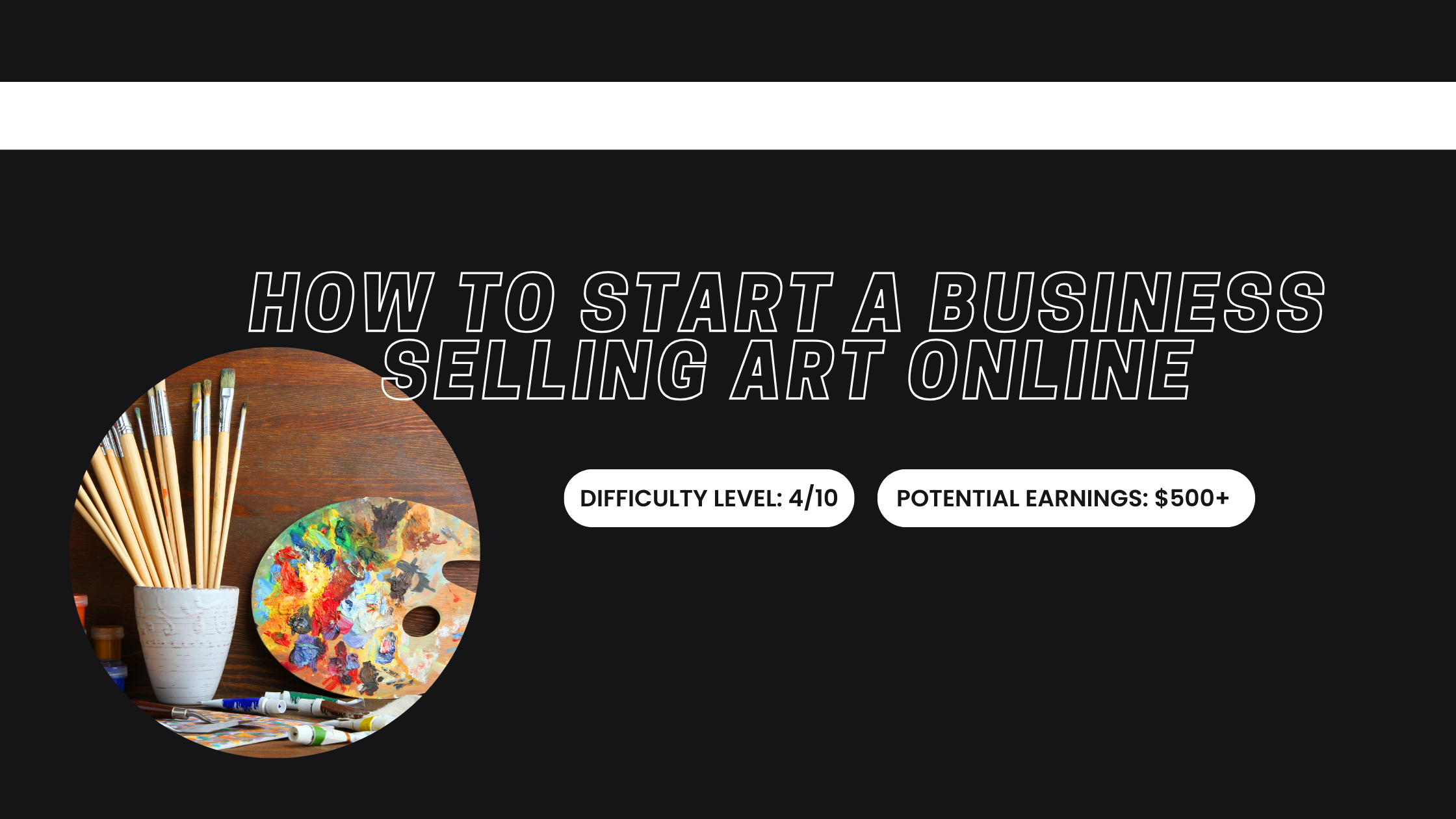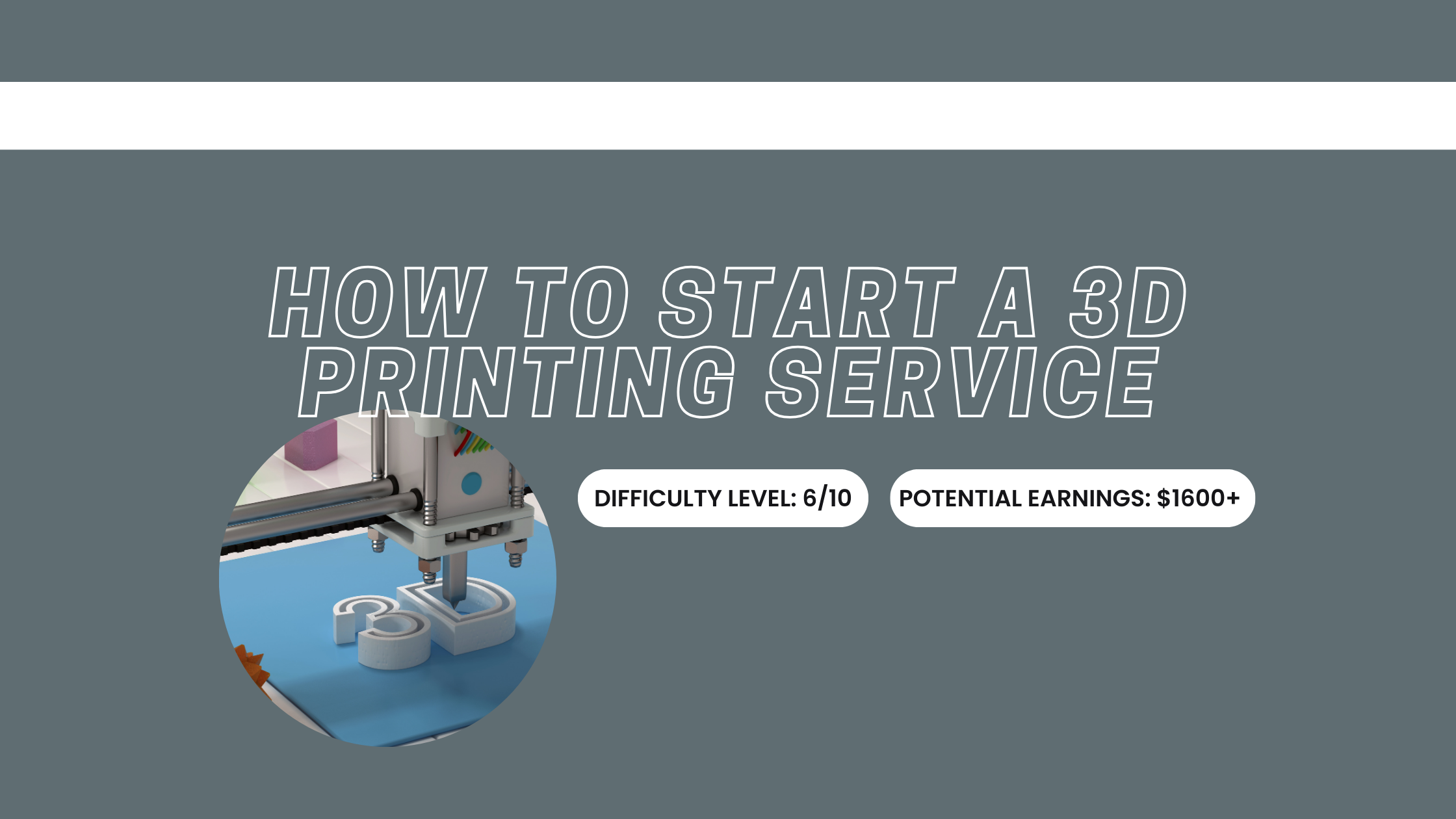How to Start a 3D Printing Service: Tips and Tricks
How to Start a 3D Printing Service: Initial Costs
Starting a 3D printing service requires an initial investment of $1,500–$10,000 depending on the type and quality of 3D printer, materials, and software. The best printers and filaments are more expensive but will enable you to offer more advanced services. Other operational expenses include material replenishment and software licenses. While it can feel daunting to make an initial investment, sometimes you have to spend money to make money. But don't go overboard; just get yourself what you need to get started.
Difficulty
6/10
Weekly Time Commitment
15–30 hours per week
Earnings Per Month
$1,500–$7,000+
Is Starting a 3D Printing Service The Right Gig for Me?
Starting a 3D printing service is a great fit for creative, tech-savvy individuals who enjoy problem-solving and working on detailed projects. A knack for design and familiarity with 3D modeling software will give you a significant edge. Patience is also key, as mastering 3D printing and handling errors can take time. However, if you dislike working with machines or have no interest in design, this side gig may not be for you.
Getting Prepared
Start by researching the different types of 3D printers and choosing the one that best fits your market - prototypes, custom parts or creative designs -. Learn 3D modeling software like Fusion 360 or TinkerCAD to provide design services. Buy supplies like filaments, resins or powders depending on your printer type. Learn troubleshooting techniques as 3D printers sometimes need adjustments. Now let's have a look at these steps in a bit more detail.
Execution
Pick a Niche
Decide whether to focus on consumer products, industrial prototypes, or specialty markets like medical devices or jewelry. Look into underserved niches by researching demand in your area. Focusing in on a niche will streamline your operations and marketing, resulting in greater profitability.
Invest in a Suitable Printer
Find a niche printer within your budget. For example, FDM printers are good for simple objects and SLA or SLS printers are best suited to more complex designs. Consider scalability and reliability when selecting equipment. An excellent printer will decrease errors and increase customer satisfaction.
Get Acquainted With Modeling Software
Master programs like Blender, Fusion 360, or AutoCAD. This will help you add value to your services and draw in customers. Start by completing online tutorials and courses to build up your knowledge.
Develop a Pricing Structure
Create transparent pricing on material costs, design complexity and print time. Give discounts on large orders and repeat clients. A clear pricing model enables profit while maintaining customer trust.
Market Your Services
Promote your business through social media, local forums, and niche communities like makerspaces. Share time-lapse videos of your printing process to captivate potential clients. Networking with businesses in need of prototypes or custom parts can lead to long-term partnerships.
Provide Excellent Customer Support
Communicate clearly with clients about project timelines and potential challenges. Offer guidance on design adjustments for optimal printing results. Deliver high-quality products consistently to build a positive reputation and gain referrals.
Bumps in the Road
Printer Malfunctions
3D printers can experience issues such as clogged nozzles or failed prints. Learn troubleshooting skills and keep spare parts on hand to minimize downtime. Regular maintenance is essential to keep your equipment running smoothly.
Handling Complex Orders
Clients may request designs that are difficult to print or require specialized knowledge. Be honest about your capabilities and offer solutions such as outsourcing specific tasks. Building expertise over time will help you take on more complex projects.
Conclusion
If you made it this far and still have questions about how to start a 3D printing service, the best advice is to just get started. You can spend all day brainstorming and preparing but ultimately a lot of lessons will come from experience. So get stuck in!
Continue Learning

Online Art Business
Start selling art online by creating a professional website, showcasing your work, and marketing through social media to reach your target audience.
